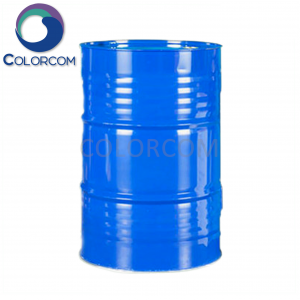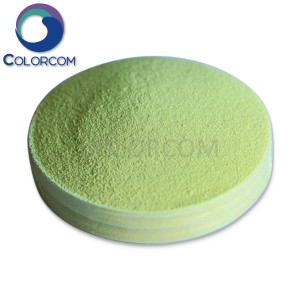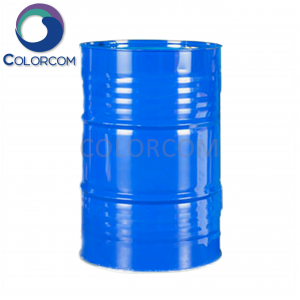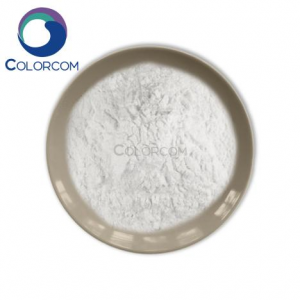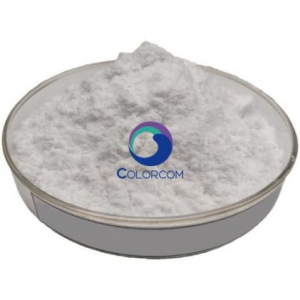Glycerin | 56-81-5
Product Physical Data:
| Product Name |
Glycerin |
| Properties |
Colorless, odorless viscous liquid with a sweet taste |
| Melting Point(°C) |
290 (101.3KPa); 182(266KPa) |
| Boiling Point(°C) |
20 |
| Relative density (20°C) |
1.2613 |
| Relative vapour density (air=1) |
3.1 |
| Critical temperature (°C) |
576.85 |
| Critical pressure (MPa) |
7.5 |
| Refractive index (n20/D) |
1.474 |
| Viscosity (MPa20/D) |
6.38 |
| Fire Point (°C) |
523(PT); 429(Glass) |
| Flash point (°C) |
177 |
| Solubility | can absorb hydrogen sulfide, hydrocyanic acid, sulfur dioxide. Can be miscible with water, ethanol, 1 part of the product can be dissolved in 11 parts of ethyl acetate, about 500 parts of ether, insoluble in benzene, carbon disulfide, trichloromethane, carbon tetrachloride, petroleum ether, chloroform, oil. Easily dehydrated, water loss to form bis-glycerol and polyglycerol, etc.. Oxidation to generate glycerol aldehyde and glycerol acid. Solidifies at 0°C, forming rhombohedral crystals with glitter. Polymerisation occurs at a temperature of about 150°C. Cannot be combined with anhydrous acetic anhydride, potassium permanganate, strong acids, corrosives, fatty amines, isocyanates, oxidising agents. |
Product Description:
Glycerin, known as glycerol in national standards, is a colourless, odourless, sweet-odoring organic substance with the appearance of a transparent viscous liquid. Commonly known as glycerol. Glycerol, can absorb moisture from the air, but also absorb hydrogen sulfide, hydrogen cyanide and sulfur dioxide.
Product Properties and Stability:
1.Colorless, transparent, odourless, viscous liquid with sweet taste and hygroscopicity. Miscible with water and alcohols, amines, phenols in any proportion, aqueous solution is neutral. Soluble in 11 times ethyl acetate, about 500 times ether. Insoluble in benzene, chloroform, carbon tetrachloride, carbon disulfide, petroleum ethers, oils, long chain fatty alcohols. Combustible, can cause combustion and explosion when encountering strong oxidising agents such as chromium dioxide and potassium chlorate. It is also a good solvent for many inorganic salts and gases. Non-corrosive to metals, can be oxidised to acrolein when used as solvent.
2.Chemical properties: esterification reaction with acid, such as with benzene dicarboxylic acid esterification to generate alkyd resin. Transesterification reaction with ester. Reacts with hydrogen chloride to form chlorinated alcohols. Glycerol dehydration has two ways: intermolecular dehydration to get diglycerol and polyglycerol; intramolecular dehydration to get acrolein. Glycerol reacts with bases to form alcoholics. Reaction with aldehydes and ketones produces acetals and ketones. Oxidation with dilute nitric acid produces glyceraldehyde and dihydroxyacetone; oxidation with periodic acid produces formic acid and formaldehyde. With strong oxidants such as chromic anhydride, potassium chlorate or potassium permanganate contact, can cause combustion or explosion. Glycerol can also play the role of nitrification and acetylation.
3.Non-toxic. Even if the total amount of drinking up to 100g of dilute solution is harmless, in the body after hydrolysis and oxidation and become a source of nutrients. In animal experiments, it has the same anaesthesia effect as alcohol when it is made to drink a very large amount.
4.Exists in baking tobacco, white-ribbed tobacco, spice tobacco, and cigarette smoke.
5.Occurs naturally in tobacco, beer, wine, cocoa.
Product Application:
1. Resin industry: used in the manufacture of alkyd resin and epoxy resin.
2. Coating industry: used in the coating industry to make various alkyd resins, polyester resins, glycidyl ethers and epoxy resins, etc.
3. Textile and printing and dyeing industry: used to make lubricant, moisture absorber, fabric wrinkle-proof shrinkage treatment agent, diffusion agent and penetrating agent.
Product Storage Methods:
1. Store in a clean and dry place, should pay attention to sealed storage. Pay attention to moisture-proof, water-proof, exothermic, strictly prohibit mixing with strong oxidants. It can be stored in tin-plated or stainless steel containers.
2. Packed in aluminium drums or galvanised iron drums or stored in tanks lined with phenolic resin. It should be protected from moisture, heat and water during storage and transport. It is forbidden to put glycerol together with strong oxidising agents (e.g. nitric acid, potassium permanganate, etc.). It should be stored and transported according to the general flammable chemical regulations.
Product Storage Notes:
1.Store in a cool, ventilated warehouse.
2.Keep away from fire and heat source.
3.Keep the container sealed.
4.It should be stored separately from oxidising agents, reducing agents, alkalis and edible chemicals, don’t mix storage.
5.Equipped with the appropriate variety and quantity of fire-fighting equipment.
6.The storage area should be equipped with leakage emergency treatment equipment and suitable shelter materials.



